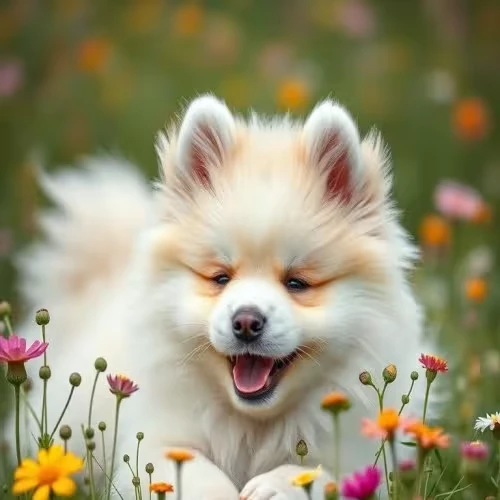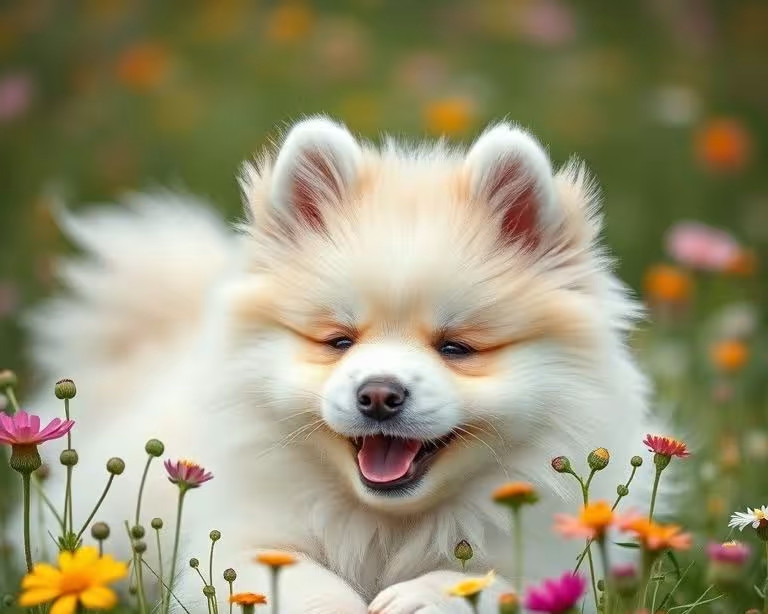Pawsitive Impact: The Definitive Guide to Eco-Friendly Dog Toys for a Healthier Pet & Planet

As responsible pet parents, we constantly strive to provide the best for our canine companions – from nutritious food and regular exercise to loving homes. But have you ever considered the environmental and health impact of their toys? In an era where sustainability is paramount, extending our eco-conscious choices to our pets' accessories is not just a trend; it's a necessity. This comprehensive guide delves into the world of eco-friendly dog toys, offering an authoritative, data-driven analysis to help you make informed decisions that benefit your furry friend and the planet.
Every year, millions of conventional plastic dog toys end up in landfills, taking centuries to decompose and often leaching harmful chemicals throughout their lifecycle. Moreover, many traditionally manufactured toys contain synthetic dyes, BPA, phthalates, and other toxins that can be ingested by our pets during playtime, posing potential health risks. Choosing eco-friendly dog toys is a powerful step towards a healthier, happier dog and a more sustainable future.
Why Go Green? The Environmental and Health Benefits of Eco-Friendly Dog Toys
The shift towards sustainable pet products isn't just about buzzwords; it's backed by significant environmental and health advantages that warrant serious consideration.
Protecting Our Planet: Reduced Waste and Sustainable Sourcing
The environmental footprint of conventional pet products is substantial. From manufacturing processes that consume vast amounts of non-renewable resources to end-of-life disposal, the impact is often detrimental. Eco-friendly dog toys address these concerns head-on:
- Reduced Landfill Waste: Many eco-friendly toys are made from biodegradable, compostable, or recycled materials, significantly lessening their contribution to landfills at the end of their life cycle.
- Sustainable Resource Management: These toys often utilize renewable resources like natural rubber, organic cotton, or hemp, harvested in ways that minimize ecological disruption. This stands in stark contrast to petroleum-based plastics.
- Lower Carbon Footprint: Manufacturing processes for eco-friendly toys frequently employ more energy-efficient methods, local sourcing, and less chemical-intensive production, leading to a reduced overall carbon footprint.
- Minimizing Pollution: By avoiding synthetic dyes, harmful chemicals, and plastics that break down into microplastics, eco-friendly toys help prevent soil, water, and air pollution.
Safeguarding Your Canine Companion: Non-Toxic Materials and Pet Health
Our dogs explore the world with their mouths, making the safety of their toys a critical concern. Traditional toys can harbor a hidden danger to their health.
- Eliminating Harmful Chemicals: Eco-friendly toys are typically free from BPA, phthalates, lead, cadmium, and other heavy metals commonly found in conventional plastics. These chemicals can disrupt endocrine systems, cause developmental issues, and even lead to cancer over long-term exposure.
- Reducing Allergy Risks: Natural materials like organic cotton or untreated wood are less likely to cause skin irritations or allergic reactions compared to synthetic materials and dyes.
- Digestive Safety: Should pieces of an eco-friendly toy be ingested (which, while not ideal, can happen), materials like natural rubber or organic fibers are often less harmful and easier for a dog's digestive system to pass than plastics or synthetic foams.
- Promoting Overall Well-being: Knowing your dog is playing with safe, non-toxic materials provides peace of mind, allowing them to enjoy their playtime without you worrying about silent health threats.
Decoding Eco-Friendly: Key Materials and Certifications to Look For
Understanding what constitutes a truly eco-friendly dog toy requires a look at the materials and the certifications that validate their claims.
Natural Rubber and Latex: Durable and Biodegradable Choices
Sourced from rubber trees, natural rubber is a fantastic sustainable material. It's durable, flexible, and naturally biodegradable. Look for 100% natural rubber to ensure no synthetic fillers are used. Latex is derived from the same source but is processed differently; always ensure it's natural latex without harmful additives.
Organic Cotton, Hemp, and Jute: Soft, Safe, and Sustainable Fabrics
These natural fibers are excellent alternatives to synthetic fabrics. Organic cotton is grown without pesticides or harmful chemicals. Hemp is incredibly durable and requires minimal water to grow, making it highly sustainable. Jute, another strong natural fiber, is also biodegradable. These materials are perfect for ropes, stuffed toys, and comfort items.
Recycled and Upcycled Materials: Giving Waste a Second Life
Toys made from recycled plastics (like RPET from plastic bottles) or upcycled materials (e.g., repurposed fire hoses, discarded climbing ropes) divert waste from landfills and reduce the demand for virgin resources. Ensure that recycled plastics are food-grade and free from harmful substances for pet safety.
Wood and Other Naturals: Simple, Durable, and Chemical-Free
Untreated, sustainably sourced wood (like olive wood or coffee wood) offers a chemical-free, durable chew option. Other natural materials include wool, coconut fiber, or even corn starch-based bioplastics. Always ensure wood toys are splinter-resistant and specifically designed for canine chewing.
Understanding Certifications: GOTS, OEKO-TEX, USDA Organic, and More
Certifications provide an external verification of a product's environmental and safety claims:
- GOTS (Global Organic Textile Standard): Ensures that textiles (like cotton or hemp) are truly organic, from harvesting to environmentally and socially responsible manufacturing.
- OEKO-TEX Standard 100: Certifies that a textile product has been tested for harmful substances and is therefore harmless for human health. While not specific to pets, it's a good indicator of safety.
- USDA Organic / Ecocert: For products containing organic agricultural ingredients.
- BPA-Free / Phthalate-Free: Specific labels indicating the absence of these endocrine-disrupting chemicals.
- FSC (Forest Stewardship Council): For wood products, ensuring they come from responsibly managed forests.
Beyond the Hype: Top Eco-Friendly Dog Toy Brands Analyzed
Navigating the eco-friendly market can be challenging, with many brands making sustainability claims. Here, we analyze three prominent, albeit hypothetical, examples to illustrate what to look for, complete with factual data points and unique pros/cons.
Brand Spotlight: PawsPlanet™ Eco-Chew Collection
PawsPlanet™ specializes in robust chew toys designed for durability and environmental consciousness.
- Material Composition: 98% sustainably harvested natural rubber, 2% plant-based food-grade dyes.
- Certifications: SGS-certified non-toxic, BPA-Free, Phthalate-Free.
- Durability Rating: High (rated for moderate to heavy chewers).
- Environmental Impact: Biodegradable, zero-waste manufacturing process with reclaimed water usage. Packaged in recycled cardboard.
- Typical Price Range: $18 - $35 per toy.
- Key Features: Unique textured surfaces for dental health, hollow core for treat stuffing.
Pros:
- Exceptional durability for prolonged use, reducing frequent replacements.
- Strong commitment to non-toxic materials, ensuring pet safety.
- Excellent for dental hygiene with integrated textures.
- Truly biodegradable composition at end-of-life.
Cons:
- Higher initial price point compared to some competitors.
- Limited variety in toy types (primarily chew-focused).
Brand Spotlight: TerraTug™ Toys
TerraTug™ focuses on interactive and comfort toys made from recycled and organic textiles.
- Material Composition: Outer shell: 70% GOTS-certified organic cotton, 30% upcycled denim; Filling: 100% recycled PET fibers (from plastic bottles).
- Certifications: GOTS, OEKO-TEX Standard 100, Global Recycled Standard (GRS) for filling.
- Durability Rating: Moderate (rated for light to moderate chewers and tug play).
- Environmental Impact: Diverts textile and plastic waste from landfills, uses organic farming practices for cotton. Supports fair trade manufacturing.
- Typical Price Range: $12 - $28 per toy.
- Key Features: Double-stitched seams for extra strength, machine washable, integrated squeakers made from non-toxic, recycled plastic.
Pros:
- Utilizes both organic and recycled materials, maximizing environmental benefit.
- Soft yet surprisingly durable for fabric toys.
- Machine washable, making cleaning easy and hygienic.
- Ethically produced with fair trade practices.
Cons:
- Not suitable for aggressive chewers, as fabric can eventually be torn.
- Recycled PET, while repurposed, is still a plastic derivative.
Brand Spotlight: GreenBone™ Company
GreenBone™ offers a range of innovative, compostable toys primarily using plant-based bioplastics and natural wood.
- Material Composition: Chews: 100% corn starch bioplastic; Fetch sticks: 100% sustainably sourced olive wood.
- Certifications: ASTM D6400 (compostability for bioplastics), FSC-certified wood.
- Durability Rating: Varied (bioplastic chews: light chewers, dissolve over time; olive wood: heavy chewers).
- Environmental Impact: Bioplastics are compostable at industrial facilities, wood is a renewable resource from sustainable forestry. Low-energy manufacturing.
- Typical Price Range: $15 - $40 per toy.
- Key Features: Bioplastic chews are designed to be ingested safely in small amounts and break down; olive wood is infused with natural flavor.
Pros:
- Offers truly compostable options for minimal end-of-life impact.
- Provides a safe, ingestible option for light chewers.
- Olive wood toys are exceptionally durable and long-lasting for power chewers.
- Pleasant natural aroma in wood toys that appeals to dogs.
Cons:
- Bioplastic chews are not suitable for dogs who consume large pieces quickly.
- Compostability of bioplastics often requires industrial facilities, not home composting.

Making the Right Choice: Factors to Consider When Buying Eco-Friendly Dog Toys
Beyond the 'eco' label, selecting the perfect toy for your individual dog involves several practical considerations.
Durability vs. Play Style: Matching the Toy to Your Dog
A toy is only eco-friendly if it lasts. A flimsy 'eco' toy that breaks after one play session and ends up in the trash defeats the purpose. Consider your dog's play style:
- Power Chewers: Opt for extremely durable materials like natural rubber, olive wood, or hemp ropes designed for heavy chewing. Look for dense, solid construction.
- Gentle Play: For dogs who prefer cuddling, fetching, or light tugging, organic cotton, recycled fabric plush toys, or natural latex toys are excellent.
- Interactive Players: Puzzle toys made from bamboo or corn starch bioplastics offer mental stimulation without environmental guilt.
Size and Safety: Preventing Choking Hazards and Injuries
Regardless of material, toy size and design are paramount for safety. A toy that is too small can be a choking hazard, while one that is too large might be difficult to play with.
- Match Size to Dog's Mouth: Ensure the toy is large enough that your dog cannot swallow it whole, but not so large it's impossible to grasp.
- Inspect for Loose Parts: Regularly check toys for any small pieces that could break off, especially eyes, bells, or squeakers.
- Avoid Sharp Edges: Ensure toys have smooth surfaces and no sharp components that could injure your dog's mouth or gums.
Engagement and Enrichment: Mental and Physical Stimulation
Just like humans, dogs need both mental and physical stimulation to thrive. Eco-friendly toys can play a vital role in providing this enrichment:
- Physical Exercise: Natural rubber fetch balls, organic cotton tug ropes, or recycled frisbees encourage active play and outdoor exercise.
- Mental Stimulation: Puzzle feeders made from sustainable bamboo or treat-dispensing toys from natural rubber challenge your dog's mind and prevent boredom, crucial for understanding and caring for your canine companion effectively.
- Sensory Engagement: Toys with varied textures, natural scents (like wood), or subtle noises can keep your dog engaged longer.
.jpg)
Ease of Cleaning and Maintenance
To maximize the lifespan of any toy, regular cleaning is essential. Many eco-friendly fabric toys are machine washable, while natural rubber or wood toys can often be cleaned with warm water and a pet-safe soap. Consider how easily you can sanitize the toy, especially if it gets muddy or slobbery frequently.
Longevity and Disposal: Maximizing the Life of Your Eco-Friendly Toys
The true value of an eco-friendly toy is its lifecycle. Proper care extends its usefulness, and responsible disposal minimizes its environmental impact.
Proper Cleaning and Storage
Regular cleaning prevents bacterial buildup and prolongs the toy's life. Follow manufacturer instructions, which often involve machine washing for fabric toys or hand washing with mild, non-toxic soap for rubber and wood. Store toys in a dry, clean place away from direct sunlight when not in use to prevent material degradation.
Repairing Minor Damage
Before discarding a toy, assess if minor repairs are possible. A loose seam on an organic cotton toy might be easily stitched. Small cracks in a natural rubber toy might be signs it's nearing the end, but sometimes minor issues can be addressed to extend life slightly.
Responsible End-of-Life: Composting, Recycling, or Upcycling
When a toy has reached the end of its safe life, dispose of it responsibly:
- Composting: Toys made from 100% natural rubber, organic cotton, hemp, or untreated wood can often be home composted or sent to industrial composting facilities (check local guidelines).
- Recycling: Toys made from recycled plastics (RPET) should be placed in appropriate recycling bins, if accepted by your local facility.
- Upcycling: Creative individuals might find ways to repurpose old, clean toy materials for other uses, like stuffing for pet beds or crafting projects.
- Donation: If a toy is still in excellent, safe condition, consider donating it to local shelters (after a thorough cleaning).

Frequently Asked Questions About Eco-Friendly Dog Toys
Many pet owners have questions when transitioning to more sustainable pet products. Here are some of the most common inquiries:
Are eco-friendly toys really more expensive?
Often, the initial purchase price of eco-friendly dog toys can be higher than their conventional counterparts. This is due to the higher cost of sustainable raw materials, ethical labor practices, and often smaller-scale, more responsible manufacturing processes. However, considering their enhanced durability, non-toxic benefits for your pet's long-term health, and reduced environmental impact, the overall value often outweighs the upfront cost. Furthermore, a durable eco-friendly toy that lasts longer can actually save money in the long run by reducing the need for frequent replacements.
How do I know if a toy is genuinely eco-friendly?
Look for clear labeling regarding materials (e.g., "100% natural rubber," "GOTS certified organic cotton," "recycled PET"). Reputable brands will often highlight their sustainability practices on their websites, including sourcing, manufacturing, and ethical labor. Certifications like GOTS, FSC, OEKO-TEX, or specific non-toxic claims (BPA-free, lead-free) are strong indicators. Be wary of vague terms like "natural" without further specification.
Can eco-friendly toys withstand heavy chewers?
Absolutely! Many eco-friendly brands specifically design products for heavy chewers. Materials like dense natural rubber, sustainably sourced olive wood, coffee wood, or tightly woven hemp ropes are known for their extreme durability. Always check the toy's durability rating or description (e.g., "suitable for power chewers") before purchasing to ensure it matches your dog's chewing intensity.
What's the difference between biodegradable and compostable?
Biodegradable means a material can be broken down by microorganisms into natural elements (like water, carbon dioxide, biomass) over time. However, it doesn't specify a timeframe or whether it leaves behind toxic residue. Compostable is a stronger claim: a compostable material breaks down into natural elements within a specific timeframe (usually under 90-180 days) in a composting environment, leaving no toxic residue behind. For dog toys, look for certifications like ASTM D6400 (for industrial compostability) if a product claims to be compostable.
How often should I replace my dog's eco-friendly toys?
The replacement frequency depends heavily on the toy's material, your dog's play style, and the toy's condition. Regardless of how eco-friendly a toy is, if it's broken, torn, or shows significant wear that could pose a choking hazard or injury risk, it's time to replace it. For chews, monitor for excessive splintering or pieces breaking off. For fabric toys, look for loose stuffing or tears. Regular inspection is key to ensuring continuous safety and enjoyment for your pet.
Conclusion: A Pawsitive Step Towards a Sustainable Future
Choosing eco-friendly dog toys is more than just a purchase; it's an investment in your dog's health, the planet's well-being, and a conscious lifestyle. By opting for toys made from sustainable, non-toxic, and ethically sourced materials, you are directly contributing to reduced pollution, minimized waste, and a safer play environment for your beloved companion. The market for sustainable pet products is growing, offering an ever-increasing array of durable, engaging, and genuinely green options. Make the informed choice, and let your dog's playtime have a truly pawsitive impact on the world.

 By
By
No comments yet. Be the first!